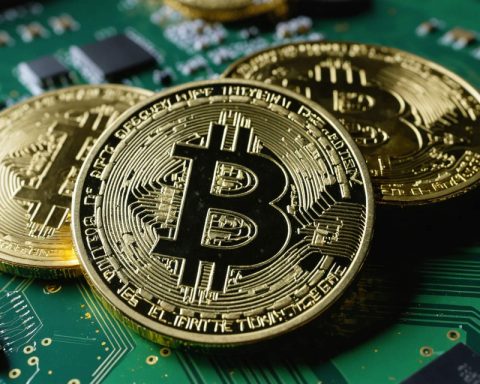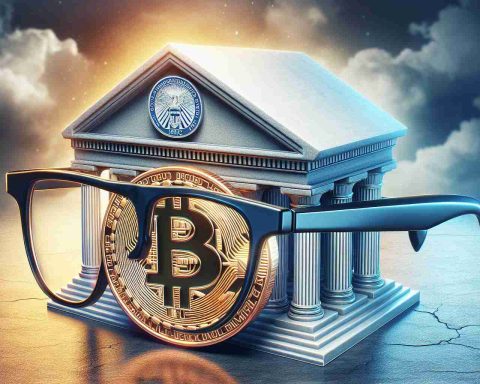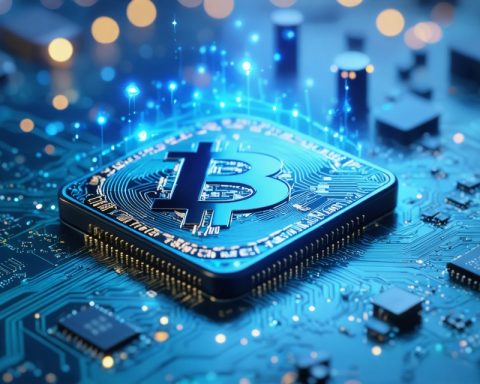In an era where technology is rapidly transforming the financial landscape, Ripple stands at the forefront, championing the integration of blockchain into conventional banking. With the ongoing rise of digital currencies, Ripple is not just creating waves—it’s set to redefine the way we transact globally.
Ripple’s RippleNet is more than just a payment protocol; it’s an inspiration for the future of finance. Offering faster, more reliable payment solutions, RippleNet connects financial institutions worldwide, ensuring that cross-border payments are not only secure but also instant. This network harnesses the power of blockchain technology, providing an alternative to outdated banking systems that often suffer from latency and high costs.
Interestingly, while cryptocurrencies like Bitcoin and Ethereum grab headlines, Ripple is gaining traction for its unique approach to bridging technological and traditional banking systems. Unlike decentralization-focused cryptocurrencies, Ripple’s methodology collaborates with banks, bringing blockchain’s potential directly into existing infrastructures. This seamless integration could pave the way for a financial ecosystem where digital currencies and traditional currencies coexist harmoniously.
Looking ahead, the implications are vast. With Ripple’s ongoing partnerships with influential financial institutions, we might soon see a world where international transactions are no longer bogged down by time-consuming processes or exorbitant fees. As Ripple continues to innovate, the potential for its technologies to transform global finance is both promising and profound.
The Ripple Effect: Transforming Global Finance and Beyond
In the rapidly evolving world of finance, Ripple is not only reshaping the transactional landscape but also hinting at broader implications for the economy, the environment, and the future of humanity. Through its RippleNet platform, it offers a glimpse into an innovative fusion of blockchain technology with existing banking systems. This harmonious blend has the potential to bring significant changes—not only in how we handle financial transactions but also in our broader relationship with technology and resources on a global scale.
Impact on the Environment
Blockchain technology, while revolutionary, is often criticized for its environmental footprint, especially concerning Bitcoin mining which demands significant energy resources. Ripple, however, has positioned itself as a more energy-conscious alternative. Unlike traditional mining-based cryptocurrencies, Ripple’s consensus ledger is more efficient, leading to a reduced carbon footprint. This presents a significant opportunity for more environmentally sustainable financial technologies, aligning with global efforts to mitigate climate change.
Influence on Humanity and Society
Ripple’s integration into conventional banking systems can democratize access to financial services. In regions where traditional banking infrastructure is limited or underdeveloped, RippleNet can facilitate cross-border transactions and financial inclusivity. This can empower local economies, reduce poverty, and provide new opportunities for individuals to participate in the global economy. By making financial services more accessible, Ripple supports a future where wealth can be distributed more equitably, potentially bridging gaps in socioeconomic disparities.
Economic Opportunities and Challenges
Economically, RippleNet’s rapid transaction capabilities can save billions in remittance fees and delays, as it introduces efficiencies that legacy banking systems cannot match. This efficiency can boost international trade and commerce, fostering a more interconnected global economy. However, it also poses challenges to traditional banking institutions, which may need to innovate rapidly to stay competitive. Such shifts could trigger significant structural changes within the financial industry, influencing employment and economic policies worldwide.
Connections to the Future of Humanity
Looking ahead, Ripple’s approach could set a precedent for other technologies seeking integration with existing systems, not just in finance but across various sectors. As humanity faces increasing digital transformation, the Ripple model underscores the importance of bridging traditional infrastructures with innovative solutions. This method can hasten the adoption of new technologies in a manner that is inclusive and sustainable, potentially addressing societal challenges more effectively.
Moreover, by facilitating faster and cheaper transactions globally, Ripple could enhance global cooperation and support humanitarian efforts more effectively, such as in times of crisis. Its ease of use could aid in swift fund transfers to impacted areas, accelerating help and resources where needed most.
In essence, the ongoing evolution driven by Ripple embodies a significant shift towards a more integrated future where technology not only supports human progress but does so in a way that is mindful of environmental and societal impacts, thus paving the way for a more equitable and sustainable world. As we stand on this threshold, Ripple’s ripple effect may very well extend beyond finance and into the broader fabric of global progress.
Ripple: Pioneering a New Era in Global Finance with Blockchain Solutions
In a rapidly evolving financial landscape, Ripple emerges as a key player, steering the integration of blockchain technology into traditional banking systems. Renowned for its innovative approach, Ripple is not just making waves but reshaping global transaction paradigms. This article delves into fresh insights and information on Ripple’s transformative technology, RippleNet, and the potential future of digital transactions.
Features and Innovations of RippleNet
RippleNet offers a state-of-the-art payment solution that bridges the efficiency gaps in conventional banking. By utilizing blockchain technology, RippleNet provides:
– Instantaneous Cross-Border Transactions: Unlike traditional banking systems plagued by delays, RippleNet ensures instant settlements, streamlining international payments.
– Cost-Effective Solutions: Ripple’s blockchain reduces transaction fees significantly, offering a more budget-friendly alternative for global money transfer.
– Interoperability with Existing Banking Systems: RippleNet seamlessly integrates with current financial infrastructure, facilitating a smoother transition to blockchain without overhauling entire systems.
Use Cases and Applications
RippleNet’s unique capabilities extend its utility across various sectors:
– Remittances: By reducing transfer time and costs, RippleNet enhances remittance services, particularly benefiting individuals who rely on sending money across borders.
– Corporate Payments: Businesses engaged in international trade can leverage RippleNet for faster, cheaper, and more secure cross-border payments.
– Bank Collaborations: Financial institutions can offer more competitive services by incorporating RippleNet into their transaction frameworks.
Market Analysis and Trends
The demand for blockchain solutions in banking is on an upward trajectory, with Ripple firmly positioned at the forefront. As institutions seek to modernize and streamline operations, Ripple’s technology is increasingly appealing. Strategic partnerships with major financial entities underscore Ripple’s influence and expanding role in the global market.
Pros and Cons
Pros:
– Rapid transaction speed and low costs.
– Enhances security for cross-border payments.
– Proven ability to integrate with existing banking systems.
Cons:
– Regulatory uncertainties surrounding cryptocurrencies may impact adoption.
– Competition from other blockchain technologies and financial services persists.
Predictions and Future Insights
The future of RippleNet looks promising, with an anticipated surge in adoption as more banks recognize the value of blockchain integration. Experts predict that Ripple’s ongoing innovations may lead to fundamentally transformed banking landscapes, where digital and fiat currencies coexist seamlessly.
As Ripple continues to drive the evolution of finance, the scope for further advancements remains vast, potentially setting new standards in global banking operations.
For more information about Ripple and its innovations, visit Ripple.











